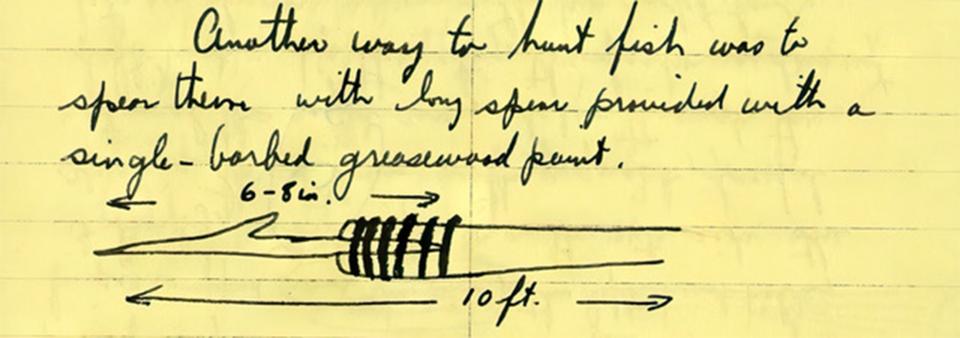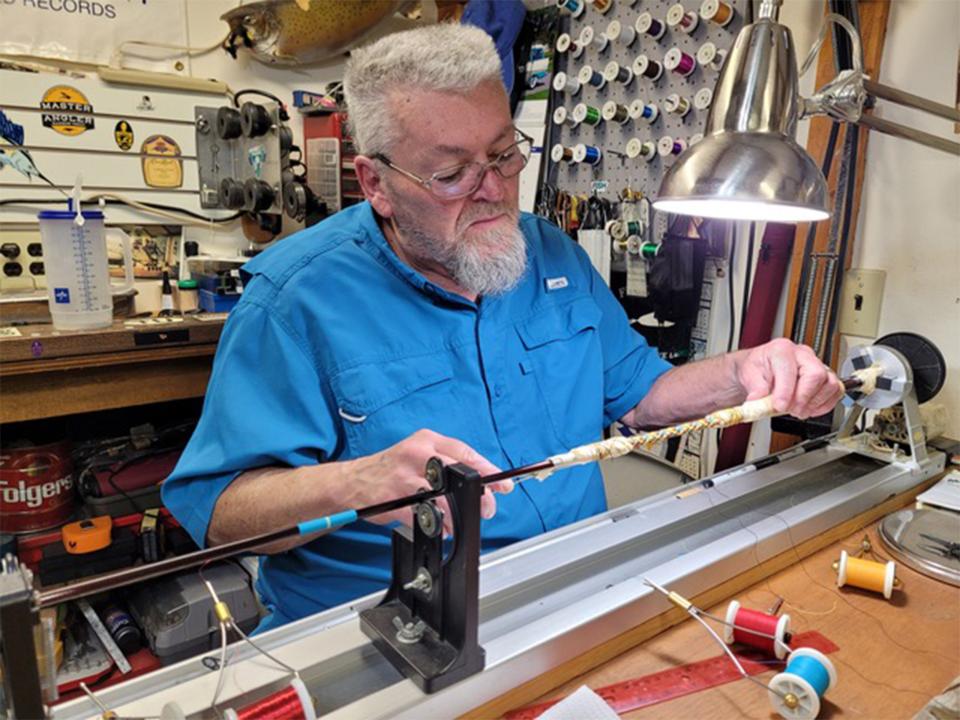- Home
- Encyclopedia
- Flies, Lures and Tackle: A Wyoming Tradition
Flies, Lures and Tackle: A Wyoming Tradition
Susie Jacobson remembers that when she was growing up in Sheridan, Wyoming, she couldn’t always depend on bath time. Her father, Arnold Jacobson, founder of Jakes Lures, often experimented in the family claw-foot bath tub with his fishing lures’ action! She says bath plans had to work around his schedule. Jakes Lures’ business has evolved throughout its operation.
Early Wyoming tackle makers and fishing methods
Wyoming fishing tackle makers have been making, using and modifying tackle for close to 2,000 years. Updated knowledge, fishing objectives, techniques, materials, craftsmanship and technology all play a role. A small number of Wyoming archaeological sites have yielded American Indian fishing artifacts. At Mummy Cave, near Cody, Wyoming, evidence likely attributed to fishing includes fragments of fish bones and scales, pieces of net and notched stones—probably net weights—and a bone harpoon point, dated approximately 1,300 years ago. Evidence of probable fishing, including fish bones and notched pebbles—also likely net weights—found at Wyoming sites in the Green River Basin dates to between 1,500 and 1,000 years old.
Native Americans used many methods to catch fish, such as basket traps, weirs, seines, dip nets, harpoons, spears and hooks. They also built dams in streams with rocks and branches to capture fish with nets, sacks and their hands. Archaeologists estimate that fish comprised 15-20 percent of the Sheep Eater Indians’ diet. Anthropologist Dimitri Shimkin worked on the Wind River Indian Reservation in the mid 20th century. In his field journals he included information about Shoshone fishing techniques.
Early travelers and settlers brought their fishing tackle with them to Wyoming from the eastern United States and Europe. Reports, records and diaries from travelers, early communities and military expeditions throughout Wyoming include documentation of fishing tackle. Mormon leader Wilford Woodruff noted in his journal that he stopped near Fort Bridger on his way to the Salt Lake Valley to fish in 1847. He caught about a dozen fish, using artificial flies and his trout rod from Liverpool, England. Early Wyoming fishing artifacts recovered include a reel found at Fort Fred Steele and a lure at South Pass City.
Image

Capt. John Bourke traveled with Gen. George Crook on Crook’s expedition through the Bighorns and describes their fishing experiences starting from a main camp on July 4, 1876. He relates that officers and soldiers fished with “the rudest appliances” and caught “hundreds and thousands of fine fish.” The fish they didn’t immediately eat were salted, dried or smoked. Bourke said when they used their “imported and manufactured flies” they had no success. However, when Bourke used a willow branch and line baited with grasshoppers, he caught a three-pound trout!
Early Wyoming outfitters took their clients on fishing excursions, which included guide services and tackle. From 1906-1916, photographer Ned Frost and Fred Richard, of the Cody-based Frost and Richard Camping Company led tours in Yellowstone National Park. They provided 18-day trips for up to 150 guests which included fishing, sightseeing and photography. The trips offered tourists a popular method of fishing from horseback: While the guide assisted them with their catch, clients remained safely on their horses, keeping their feet dry.
Tackle evolves
As Wyoming became more settled, new resident Wyoming tackle makers emerged. They started to modify existing tackle and create their own equipment specific to the waters they fished. Tackle makers’ reels, rods, flies and lures evolve with their new ideas. To accommodate the conditions of the local rivers, streams and lakes, they use a variety of materials and tackle improvements.
Reel makers
At least five early reel makers received government patents for the Wyoming reels they built. Leland Brown and Jerry Dolce from Worland, Wyoming, were granted a patent in 1938 for a “prewound casting reel.” Dempsey Luton, fourth-generation family outfitters from Jackson, Wyoming, had three patents. Two “fishing reel” patents were granted to Luton in 1945 and 1950. An additional patent filed with Karl Johnson was granted in 1949 for an “electric fishing reel.” Hugo Hasse from Sheridan, Wyoming, was also granted a patent in 1952 for a “Fly Rod Spinning Reel.”
Today’s makers continue to modify reels. Zac Sexton, of OCR Fly Reels, in Buffalo, Wyoming, describes his OCR Bighorn fly reel as the only U.S. made semi-automatic reel. The reel is aircraft grade aluminum. When a lever is engaged it picks up the slack in your line quickly by engaging several multiplying gears. A major feature of the reel is a push-button adjustment to slide your reel forward and back and lock in place to balance it properly with your rods. Sexton claims that precision programming is all-important when making the perfect fly reel today. Sexton says “he enjoys working with a company that is forward thinking when designing new fishing products with honor and respect to the history of fly fishing.”
Rod builders
Rod builders across the state continue to create custom rods using a variety of designs and materials. J.C. McNeel, from Afton, Wyoming, makes custom rods using several types of wood. He especially likes to work with aspen and juniper because these woods are strong, have beautiful color, are light and have character.
Mark Lambert has been making custom rods in his shop in Fort Washakie, Wyoming, for almost 25 years. Lambert is a third-generation rod builder who started building rods at age 8 with his family in Hatteras, North Carolina. He makes rods for all types of fishing, including fly, ice, off-shore and in-shore. He uses a variety of materials such as graphite, E-glass (a newer, lighter version of fiberglass) and bamboo.
Image
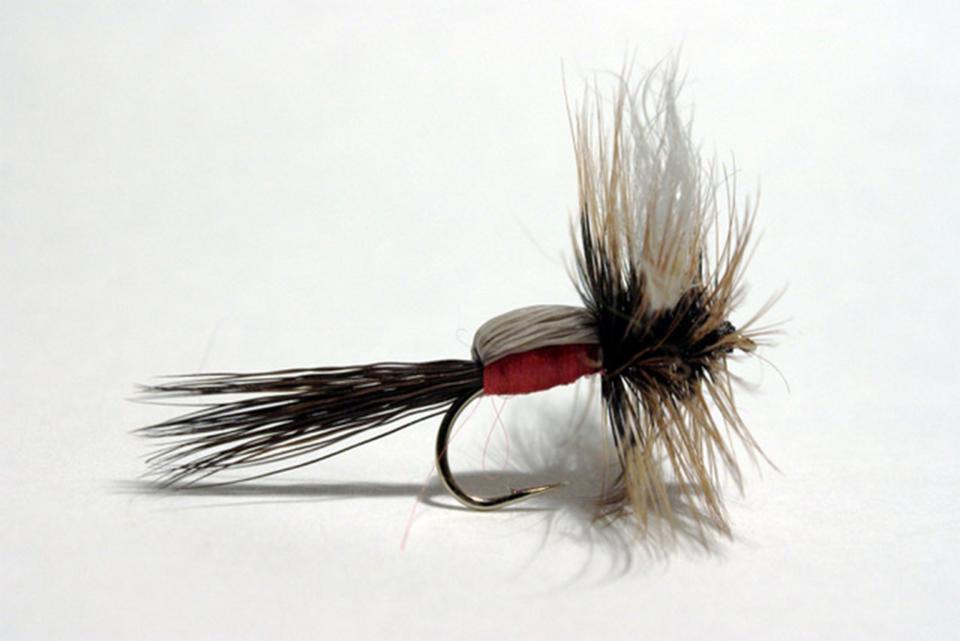
Image
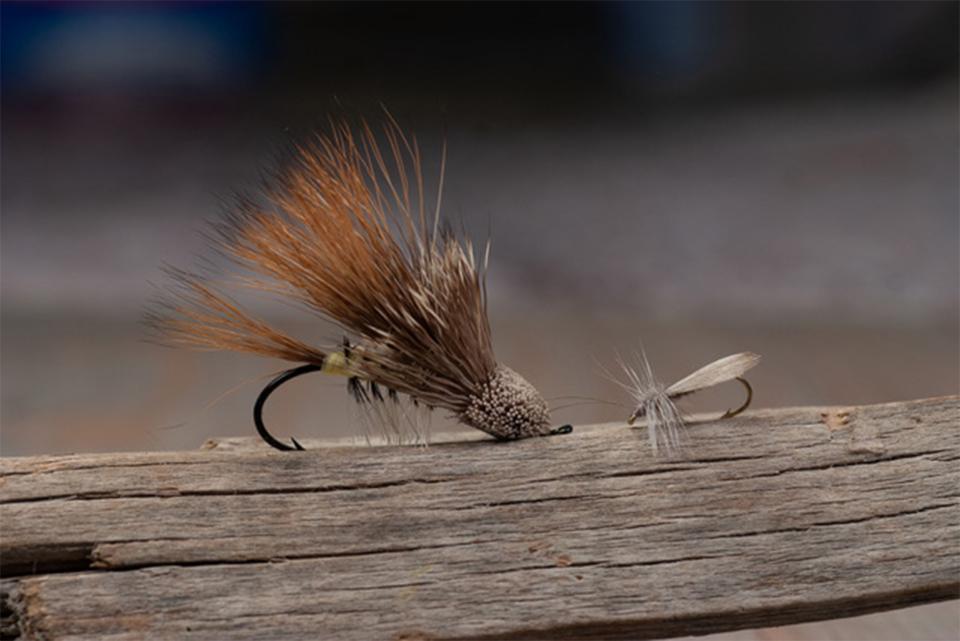
Lambert’s rod-building process involves several steps including splining, sanding, making the cork handles, wrapping, glassing and applying reel seats and guards. It can take an average of 20 hours to build a custom rod. Lambert built the equipment he needs for building rods. For example, the modified base of a screen door holds the rod in place. A sewing machine motor controls the speed of the rod’s revolutions while he is wrapping.
When I recently visited Lambert, he was working on a custom rod for a Native American guide who takes his clients into the back country to fish. The guide specified rod wrappings to match his dancing regalia colors. Lambert used blues, red, metallic red, yellow, orange and turquoise to create a geometric pattern to complement his customer’s tribal regalia. Lambert says wrapping is a dying art. He creates his own patterns such as an American flag and a highly technical fish pattern.
When someone contacts Lambert to make a custom rod, he asks them how they fish and what they want, in order to assemble a personalized rod. Lambert has customers in other states and even other countries. He enjoys the serenity in creating his custom rods. He can sit for hours listening to music and wrapping rods.
Fly tiers and their patterns
Wyoming has many skilled, well-known and respected fly tiers and their signature fly patterns. They have created new designs and modified existing patterns to work best for their specific needs. New ideas, techniques and materials lead to the development of new fly patterns. Tiers use their knowledge of local aquatic insects to help them imitate insects in their flies. Location, water conditions, entomology and target fish are all factors that determine the fly created.
Marvin Nolte, of Bar Nunn, Wyoming, ties unique classic Atlantic salmon flies. Although fishermen can use Nolte’s flies, he makes them to be framed for display. Nolte says the history of antique flies heavily influences his interest and craftsmanship. Old books help him to study the old patterns and materials. He follows the “old recipes” as closely as possible.
Image
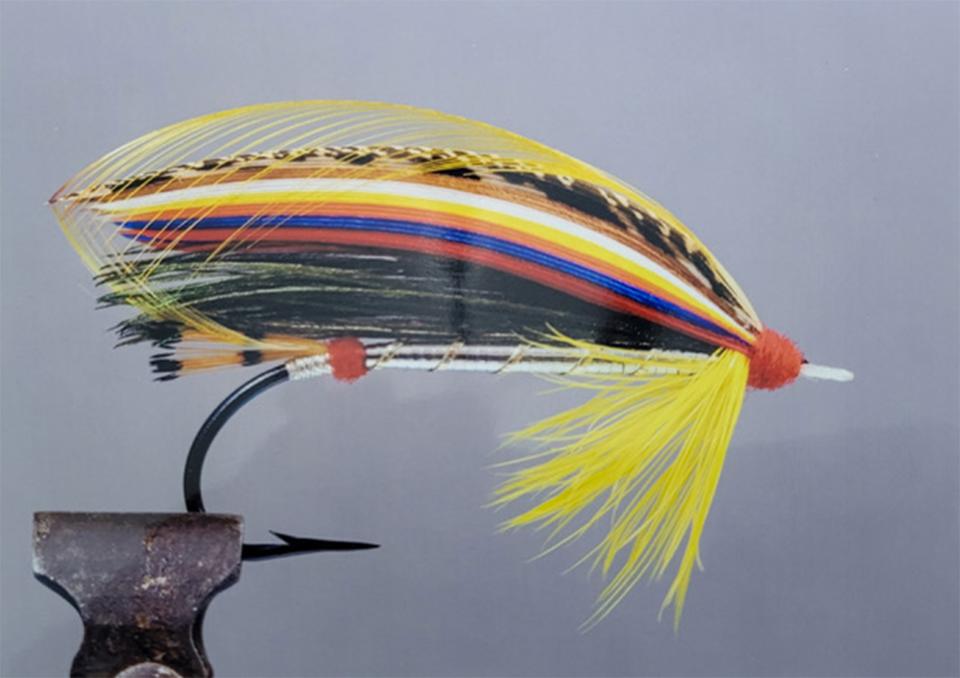
Image

To get necessary materials, Nolte sometimes has to go to extremes. Classic flies had a blind hook—that is, a hook with no eye. Makers attached, in a loop to the hook, three strands of silkworm guts (glands). First, he had to find a source of blind hooks, locating a maker in England. Then he needed silkworm “guts;” makers had replaced these with nylon line. Deciding to raise his own silkworms, he purchased eggs, but then had to solve the problem of feeding the caterpillars. They ate mulberry leaves, which Nolte obtained from friends in the western U.S.
Finding the exact feathers was another problem. When specific feathers are unobtainable or protected by law, he makes close substitutions. To make a classic fly requires about four to five hours. Nolte considers himself an artisan or craftsman who accurately reproduces someone else’s creation, as with his colorful Atlantic salmon flies. Since 1986, throughout his professional career, Nolte has tied 2,182 Atlantic salmon flies. He enjoys his mental release while tying his classic flies and also enjoys the challenge of being deliberate and precise.
Lures
In Sheridan, Jakes Lures is a fourth-generation family-run business that has made many changes. Arnold Jacobson founded it in the early 1950s, working at his kitchen table, never advertising and selling his lures on consignment. He etched them, hand painting them with wire and baked them in his home oven. His daughter, Susie, took over the business in 1986. Her son, Kevin Songer, owns the business today. His daughter, Sera, works at Jakes Lures and is looking forward to running the business in the future.
The family business and market have evolved throughout their nearly 70 years of operation. Modern machinery has updated the process; a pad printing machine, for example, is used to print the colors and patterns on the lures. Today Jakes Lures sells lures wholesale from its facility in Sheridan. In addition, they sell to retailers across the United States and other countries, such as Canada and Australia.
Conclusion
These makers are just a few examples of the variety of such people across the state. They and their craft have evolved over the years, with their craftsmanship and ingenuity driving them to use new methods, materials and technology. But their goals today remain the same as those of earlier tackle makers--to create the best product possible to improve the success of fishermen, and the quality of their experience.
Editor’s note: Special thanks to board and staff of the Wyoming Cultural Trust Fund, whose support in part made publication of this article possible.
Resources
Primary Sources
- Jacobson, Susie. Interview and site visit with author, June 6, 2023.
- Lambert, Mark. Interview and site visit with author, July 18, 2023.
- Nolte, Marvin. Interview with author, May 9, 2023.
- Pelton, Spencer, Wyoming State Archaeologist. Telephone interview and written emails with author, March 17, March 20 and Dec. 11, 2023; Feb. 23, 2024.
- Richard, Robert. Interview with author, July 10, 2023.
- Sexton, Zac. Interview and site visit with author, June 5, 2023.
- Shimkin, Dimitri. Field Notes. Jackson Hole Historical Society & Museum, accessed Jan. 5, 2024 at https://jacksonholehistory.org/.
- University of Wyoming Archaeological Repository (wyoarchaeo.wyo.gov). Office of the State Archaeologist. Laramie, Wyo.
Secondary Sources
- Bourke, John G. On the Border with Crook. New York: Charles Scribner’s Sons, 1891, 327-331, 340-341.
- Christianson, Russel R. and Tom Harwood. Northwest Fishing Reels, A Collector’s Guide to Reels from the Great Northwest. Centralia, Wash.: Gorham Printing, 2017, 59, 60, 139, 186-189.
- Loendorf, Lawrence L. and Nancy Medaris Stone. Mountain Spirit: The Sheep Eater Indians of Yellowstone. Salt Lake City: The University of Utah Press, 2006, 148-152.
- Lubinski, Patrick M. “Prehistoric Fishing in the Middle Rocky Mountains.” Plains Anthropologist 45, no. 172, (2000): 155-168, 155-162.
- Richard, Bob. Journey to Yellowstone. Cody, Wyoming: Elliot Rivers Publishing Company, 2018, 3, 14, 20, 26.
- Sanchez, Scott. The Never-Ending Stream-A Tribute to Fly-Tying Form and Function. Boulder, Colorado: Pruett Publishing Company, 2010, 20, 51-63.
- Stauffer, T. Paul. A History of Fishing in Star Valley, WY. T. Paul Stauffer, 2021, 295.
- United States Department of the Interior. National Park Service. Husted, Wilfred M. and Robert Edgar. “The Archaeology of Mummy Cave, Wyoming: An Introduction to Shoshonean Prehistory.” Lincoln, Nebraska: Midwest Archaeological Center and Southwest Archaeological Center, 2002, 26, 80, 82, 88, 125, 126, 217, 223.
Illustrations
- Dimitri Shimkin’s sketches of traditional Shoshone fishing gear are from the collections of the Jackson Hole Historical Society & Museum. Used with thanks.
- The photo of women fishing from horseback on a guided tour to Yellowstone National Park is by longtime outfitter Ned Frost; special thanks to Bob Richard.
- The photos of the Jack Dennis Royal Humpy signature fly and of the Jay Buchner Dry Stone Fly and Dun Caddis signature flies are by author and fly tier Scott Sanchez. Special thanks to him.
- The photos of Mark Lambert wrapping a custom rod, Marvin Nolte’s classic Helmsdale Doctor fly and of Susie Jacobson painting the dots on the Wobbler are all by the author. Used with permission and thanks.


